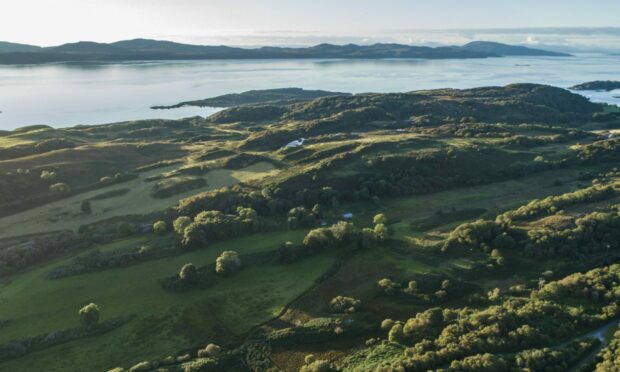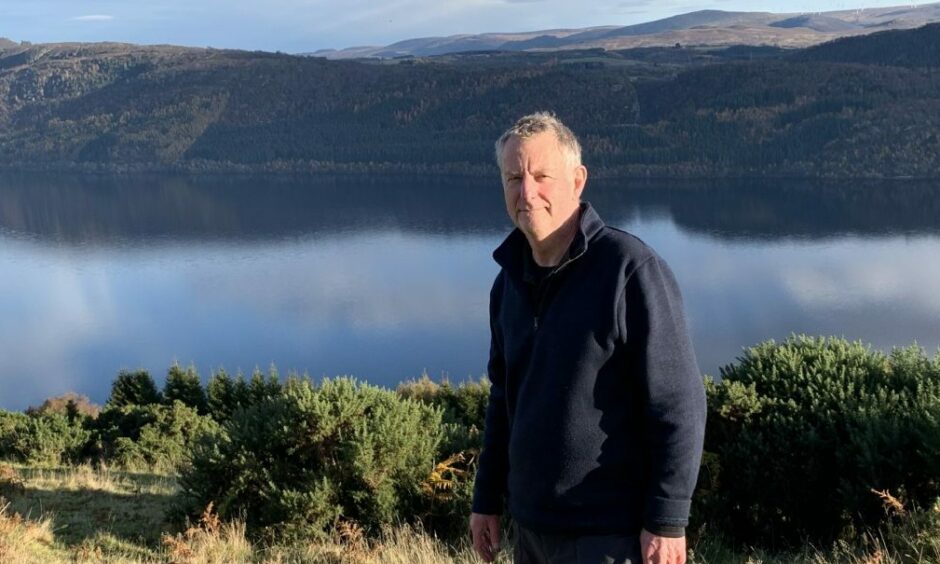Communities and employees dependent on an expanding rewilding project face a “high degree of risk” due to the way it’s funded, according to the Scottish Land Commission.
Highlands Rewilding’s “growing concentration of landed power” is also being questioned. The company is also being urged to give communities a greater say in decision-making.
Earlier this month, the company announced it had raised the funds to buy the 3,500-acre Tayvallich Estate in Argyll.
It will be the third estate snapped up by the mass-ownership for-profit company.
What does Highlands Rewilding do?
Highlands Rewilding was set up by Dr Jeremy Leggett. He is the founder of the solar energy company Solarcentury and former scientific director at Greenpeace.
Fifty initial funders injected £7.6 million into the company which bought the 1,262-acre Bunloit Estate near Loch Ness in 2020.
The 860-acre Beldorney Estate in Aberdeenshire was acquired the following year.
The company says its purpose is to enable nature recovery and community prosperity through rewilding.
Scottish Land Commission (SLC) chairman Andrew Thin has written a letter to Dr Leggett.
In it, he welcomes the potential alignment between Highlands Rewilding’s “high level strategic aspirations” and the Scottish Government’s priorities.
However, he said the company’s financial model involves “significant financial gearing and unusually speculative income forecasts”.
“It implies a high degree of risk, not just for Highlands Rewilding, but also for the communities and employees that depend on you.”
Mr Thin says the company’s ownership and governance structures imply a “growing concentrating of landed power as you acquire more property.”
While this may be necessary to attract capital investment, the evidence is not clear, he said.
“Scottish Government policy, as expressed in the forthcoming Land Reform Bill, articulates a clear intention to diversify ownership and landed power going forward, including an emphasis on greater community empowerment and local democratic accountability.
“You may wish to reflect on this as you develop your thinking on ownership and governance structures.”
Allowing communities to be more involved
Expanding on the letter, SLC chief executive Hamish Trench, said: “What we said to Dr Leggett is what we say to anyone with a stated interest in buying multiple land holdings in Scotland.
“Part of a responsible approach to that is going to be about the financial stability and particularly thinking about how local communities can be involved in the governance.”
Mr Trench said there are many mixed-governance models of land ownership that allow communities to be more involved.
“The context we have at the moment of more private investment coming into Scotland for natural capital, means that it is even more important than ever we develop these kind of structures so that communities are included in that.”
Dr Leggett said he strongly disputes the criticisms.
He said Mr Thin’s letter seemed “discordant” with the general tone of a meeting he had with the SLC board.
“Highlands Rewilding empathises with the land-ownership inequalities that drive the commission’s work, and we hope that our mass-ownership model of land ownership will make a contribution in trying to defuse it in the years ahead.”
He said Highlands Rewilding is taking no more risk than many front-running entrepreneurial organisations.
“We have many very experienced business leaders investing in us as individuals, including Scottish business leaders, and some companies too.
“We know they are all pleased with our progress, and comfortable with the risks we are taking with their money.
Calculated, not irresponsible risk-taking
“Scotland will not hit its vital nature-recovery targets unless entrepreneurs and investors are willing to take risks.
“This is calculated risk-taking, not irresponsible risk-taking, as the commission chair’s note infers.”
Dr Leggett says if the project works it benefits communities and the company.
“And if it doesn’t work out? Highlands Rewilding will have tried, and honourably failed.
“And we will have bought time for communities to buy all or parts of Highlands Rewilding land themselves, and/or work with us to find a mission-congruent buyer or buyers.
“And that selling will limit any loss for our investors.”
He also addressed the possible effect on staff.
He said: “If the risk-taking works, they are rising stars in a company that Scotland can be proud of.
Scotland will not hit its vital nature-recovery targets unless entrepreneurs and investors are willing to take risks.
Jeremy Leggett
“If it doesn’t, they will have been stars in an already widely-acclaimed track record of natural capital accomplishment, and will surely find new employment accordingly.”
Government targets
Dr Leggett says the SLC needs to factor in Scottish Government targets.
“In a time of existential threat from climate meltdown and biodiversity collapse, we believe it is dangerous to delay meaningful action until the concentration of power in land ownership has been defused (as we accept it must be).
“That is why, working within the existing system, we are seeking to diversify power and ownership of land while simultaneously positioning to attract capital to the reversal of climate meltdown and biodiversity collapse.
“Our aim is to achieve outcomes that address all three problems.”
He said Highland Rewilding is drafting a memorandum of understanding on how it will work together with the Tayvallich community.
“We are hoping that when that document is completed it will give all but the most diehard among our critics pause for thought.”
Are you interested in more exclusive and breaking Highland and Islands news from The P&J? If so, why not join our dedicated Facebook page HERE.




Conversation